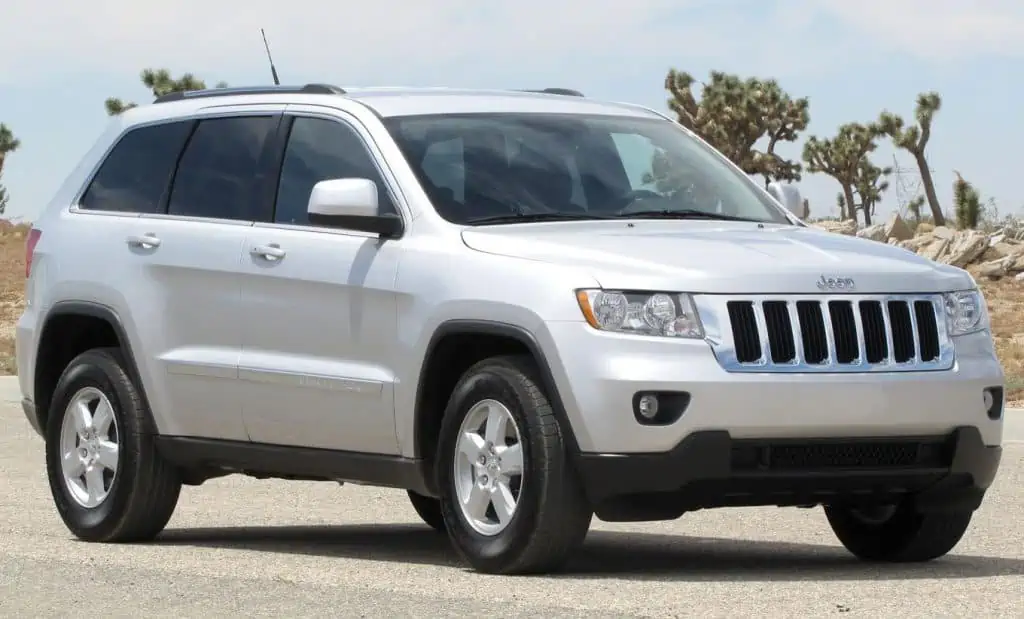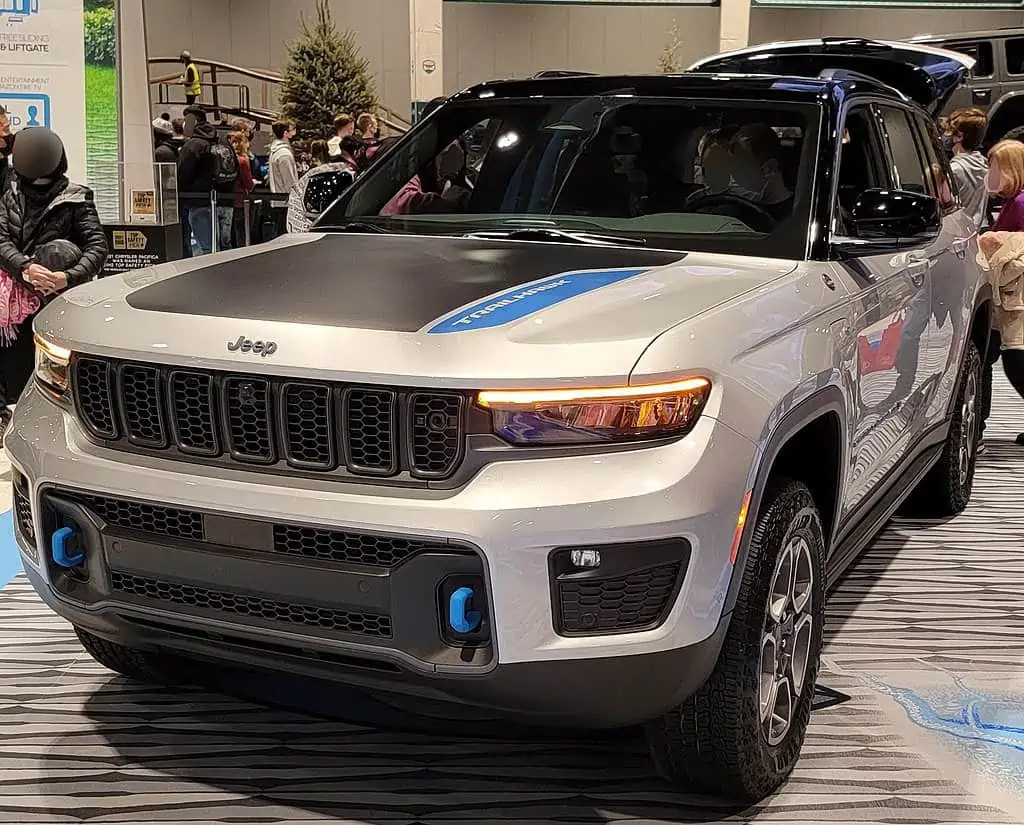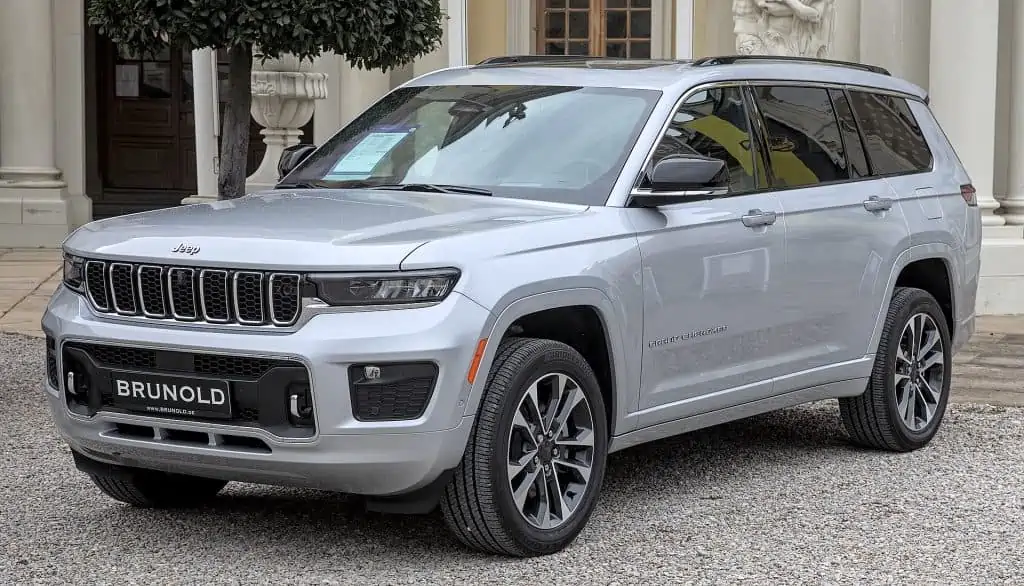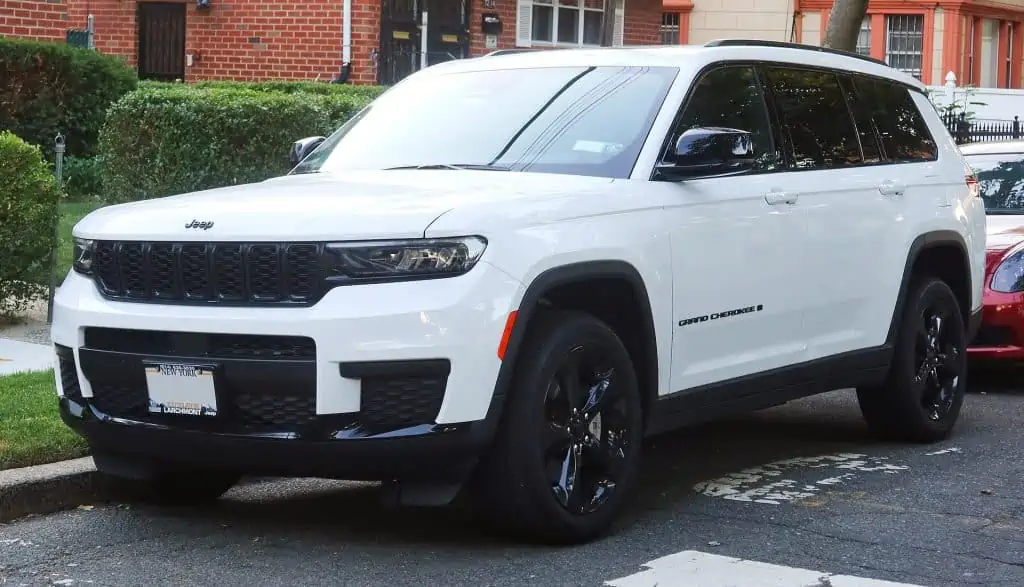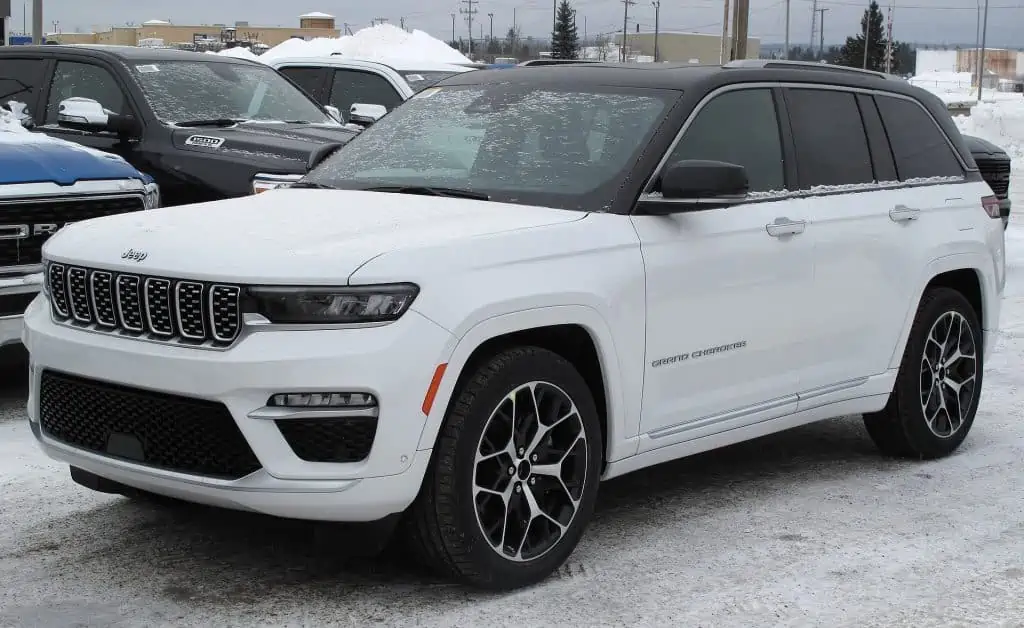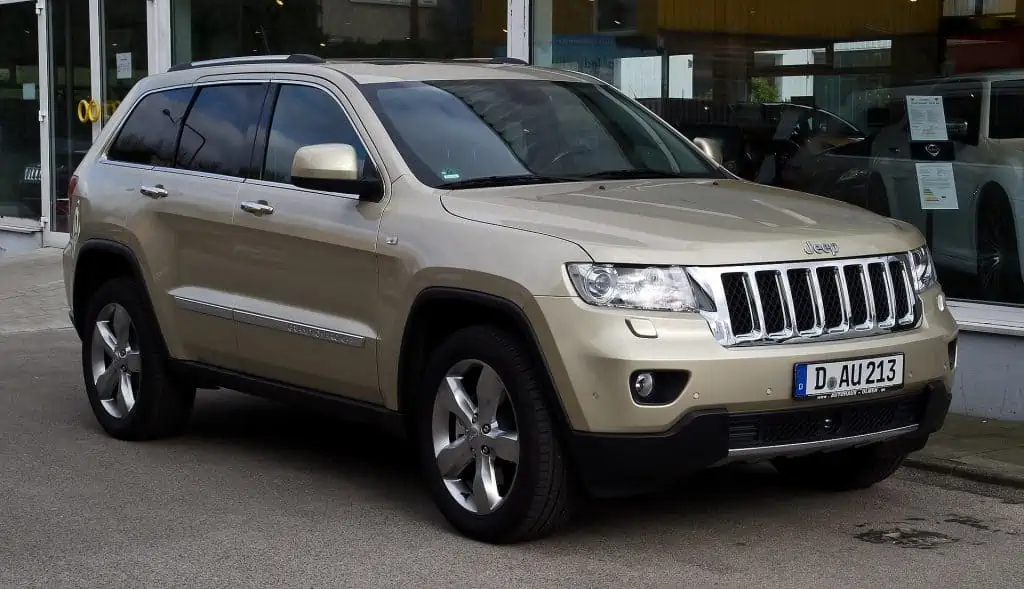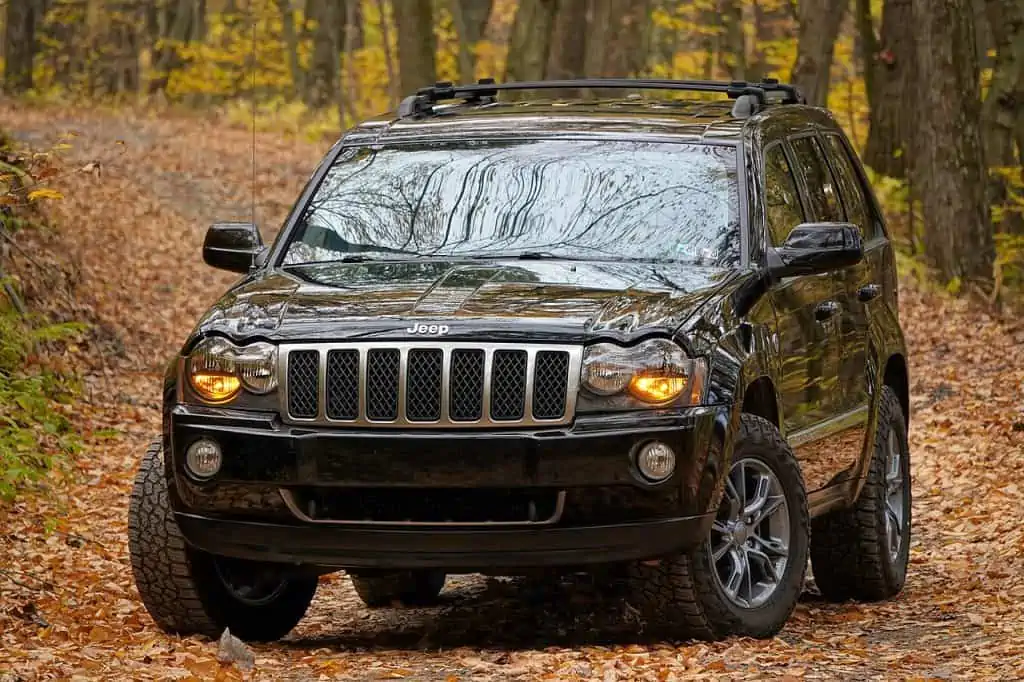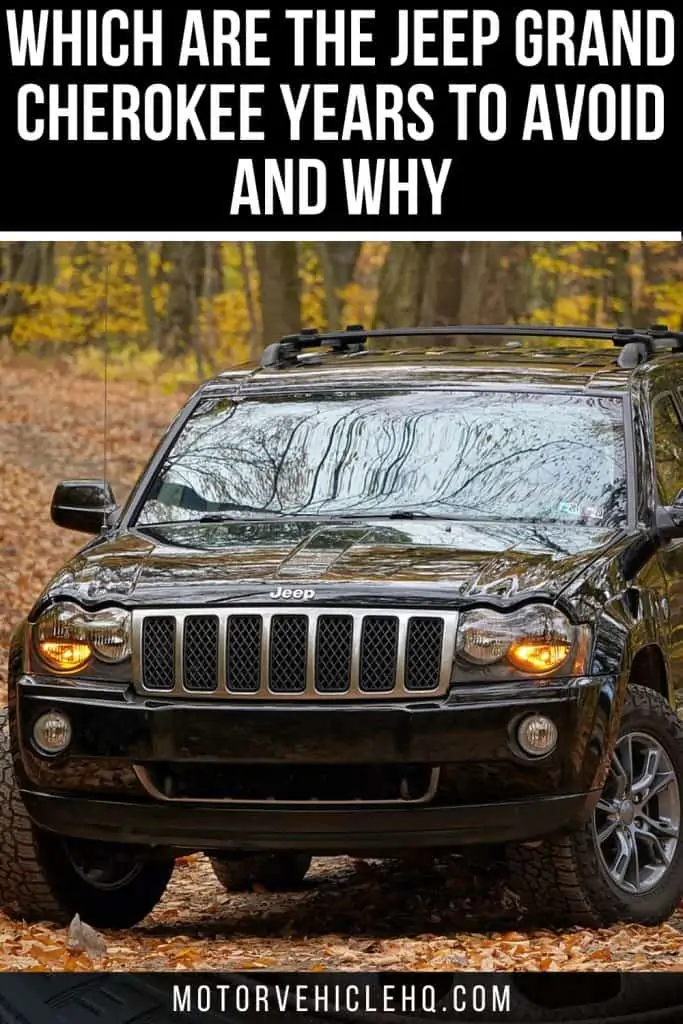The Willys Jeep proved to be one of the front-line vehicles with the most significant impact during the Second World War. From transporting generals and stern G.I.S to bringing essential supplies like ammunition and medicine, as well as serving as quicksand machine gun turrets.
It is reliable and has necessary maintenance that can be completed quickly on the field. That contrasts with the Jeep Grand Cherokee years ago.
While the Grand Cherokee and many other contemporary Jeeps are highly sophisticated vehicles, the Willys could be disassembled to the minimal essentials and repaired using sparse materials.
In addition to making them far more difficult to fix when things go wrong, this also makes them more susceptible overall. Additional elements, such as glitzy equipment, creature comforts, and nice-to-haves, all create more potential points of failure.
Therefore, why are so many people outraged by the Grand Cherokee’s alleged lack of dependability despite its extreme luxury and lack of military prowess?
The Jeep Grand Cheer years, however, are among the unreliable ones and should be avoided at all costs as they provide a bigger risk to your finances and sanity. But is there any hope despite the numerous drawbacks of high operating expenses and pricey repairs?
What Is the History of the Jeep Grand Cherokee?
Before determining which Jeep Grand Cherokee model year to avoid the most, we need first spend some time talking about the particular vehicle. What exactly is the Grand Cherokee?
Well, the Cherokee, Jeep’s revolutionary SUV, is undoubtedly recognizable to the majority of you. Many people today believe that the Cherokee set the standard for all current sports utility vehicles.
Customers whose number was around 200 or more frequently complained about the engine issues, highlighting the serious engine issues with this particular 2011 Jeep Grand Cherokee model.
On the other hand, and as the name may imply, the Grand Cherokee was positioned to be a more opulent and upmarket version of the Cherokee. In other words, promoting and selling Jeep’s off-road dominance and usefulness to a more affluent clientele. In general, it was bigger and quicker than the more affordable Cherokee and had more luxuries fitted.
One of the first American vehicles to be created using CAD was the Grand Cherokee, which dates back to 1983. The first Jeep Grand Cherokee was unveiled in 1992 for the 1993 model year, after years of development.
Since then, there have been five generations of the Grand Cherokee. The fifth-generation “WL” Grand Cherokee, which was just launched in 2021, is the latest.
Jeep’s Grand Cherokee is a resounding triumph. The Grand Cherokee has created a distinct market niche for sporty, opulent, and versatile do-it-all SUVs in the mid-size SUV market.
Currently, the Grand Cherokee is available with plug-in hybrid drivetrains and a long-wheelbase model, aiming once more for a more affluent market.
Which are the Jeep Grand Cherokee Years to Avoid and Why Should You Avoid Them?
Like any other product you buy, it’s a good general guideline to steer clear of model years with a high number of customer complaints, mechanical issues, and high maintenance costs. The Grand Cherokee model years listed below are among the worst to buy since they are most likely to have mechanical issues. They include:
- 2011
- 2013
- 2014
- 2015
- 2016
A great location to start your search and receive a broad overview of each model year by complaints recalls, etc. is CarComplaints.com. Grand Cherokee complaints make up more than a quarter of all Jeep complaints, totaling 3,000 across all model years. Over the years, electrical problems have been the most prevalent problem type.
So that you are already aware of the problems the Jeep Grand Cherokee has, and so that you can have a general picture of it, I’ll start with the worst versions first.
Let’s look through the worst Jeep Grand Cherokee models in more depth, along with the reasons why you should avoid them.
2011
The engine’s refusal to start or delayed start when lit was the major problem that arose.
Numerous customers whose number was around 200 or more filed complaints about similar grievances, demonstrating the severe engine problems with this model of the 2011 Jeep Grand Cherokee.
These problems made it somewhat unreliable because it is a major concern if your engine won’t even start when you need to go long distances.
Additionally, engine problems are frightening since they are expensive to fix.
2022 Grand Cherokee by UltraTech66 / CC BY-SA 4.0. The Grand Cherokee from Jeep is without a doubt a revolutionary car. It was a premium SUV before the idea of high-end SUVs was controversial as it is today.
Of course, the price will vary depending on the severity of the problem, but it should be clear that if the problem is serious, the entire engine will need to be replaced, driving up the cost of the repair.
Break troubles are a huge matter because it’s an SUV that has been advertised to drive through various elements and should be a thing that does not create problems. The fuel pump also had a few issues that led the car to halt more than once.
2013
There have been several instances of the engine failing to ignite when started or occasionally failing to start at all, resulting in the same problems as the previously described model.
This would result in significant repair expenses because engine issues are often a little more sophisticated and challenging to resolve.
This made the vehicle unreliable since you don’t want it to break down, stall, or, even worse, not start at all.
The 2013 Jeep Grand Cherokee model suffered brake troubles in addition to engine problems, which were only braking fluid leaks that necessitated regular refilling concerns.
The cost of repair would be significant because engines are difficult to replace and repair.
2014
The most significant fault with the Jeep Grand Cherokee in 2014, despite having been upgraded and improved, was the transmission. Switching gears was hard and challenging.
The gearbox failed to shift into parking even after the motor was disconnected, leading to several injuries.
As the brake fluid began to leak, the National Highway Traffic Safety Administration issued 12 recalls for this vehicle.
It was hard to turn off cruise control due to short circuit issues, and it continued to go at a constant pace even when the feature was turned off.
Since it continued to accelerate even with the foot off the accelerator, it was also an accelerator issue.
The OCR Module occasionally rendered the airbags inoperable. Some clients weren’t even informed by the indication light. Due to an alternator issue, the vehicle also stopped.
2015
Similar problems affected the 2015 Jeep Grand Cherokee model as they did the 2014 vehicle. A larger section of the transmission produced difficulties for these vehicles.
The rear suspension had shorter arms that led them to crack or fracture, making the rear suspension produce trouble with breaking.
The software in the vehicle had several vulnerabilities that were exploited, and people may have had their vehicles’ software compromised by uninvited parties acting strangely in them.
The gearbox also suffered from being excessively harsh and challenging to shift. Additionally, there was a brake fluid leak that required frequent fluid changes and raised serious safety issues.
Grand Cherokee L 4xe Overland by Alexander Migl / CC BY-SA 4.0. With the Overland trim, Jeep is glad to give your Grand Cherokee a better interior. Among the many items, you receive is a leather dashboard with clean stitching, which at first glance seems good.
The car’s short circuit made it impossible to turn off cruise control, which led to multiple problems due to errant acceleration and serious accidents.
2016
Like the two versions before it, the 2016 Jeep Grand Cherokee had problems that needed to be fixed.
It experienced braking and hydraulic problems, the brake fluid continued to leak, and the brake caliper occasionally even snapped easily.
Due to this fracture and problem, the driver frequently had to apply the brakes earlier than usual to make sure they stopped in the proper location.
The problem with the transmission and gearbox was widespread.
Many vehicles would just roll about on a high surface since they were not stopped by being in park mode because the gear was difficult to shift and occasionally had not switched to that mode.
What are the Jeep Grand Cherokee’s Best Years You Can Consider Purchasing?
The 1998 and 1999 vehicles are preferred by the majority of experts over the 1990s models because of modifications that made them faster and better for off-roading.
The 2005 model would be the best choice for the 2000s due to its potent on- and off-road skills.
Additionally, the engine’s design ensures a balance between efficiency and performance. Among the most recent models, the 2017 and 2018 Jeep Grand Cherokees come highly recommended.
They include modern conveniences and aesthetically pleasing leather seats to make your journey more opulent and comfortable.
But if you’re seeking the least-old but not fully new Jeep Grand Cherokee models that are the most dependable, take into account these two:
2009
This 2009 Grand Cherokee model may be outdated—at it’s least ten years old—but it’s still one of the greatest ones ever made.
It has remained one of this specific car’s most dependable models, and both buyers and critics praised it highly.
It had a tough design, excellent off-road capabilities, and powerful engines that were effective for the size of the vehicle.
Despite not having the finest security protections, it had enough features to keep the passengers safe in the event of any issues.
Last but not least, customers say it is simple to operate and has strong handling and speed capabilities.
A 2021 Jeep Grand Cherokee L Laredo by Kevauto / CC BY-SA 4.0. The 2020 model’s design language served as the foundation for the 2021 Jeep Cherokee, which boasts a svelte yet tough exterior. It is attractive and has angular led lighting.
2010
The inside of this 2010 Jeep Grand Cherokee version had been upgraded to a higher degree than previously and featured exceptional off-road capabilities.
It possessed a large, luxurious, comfortable, open driving, and incredible off-road handling.
The car’s engine is fairly powerful and has little trouble navigating over the majority of obstacles. It had an excellent fuel-to-drive ratio and was respectable for an SUV.
2017
The cabin was upgraded and made more opulent in the 2017 Jeep Cherokee model, which improved the situation even more.
Since the inside was improved and built to be even more comfortable than the previous versions, it is even claimed to be the most opulent model ever produced.
Additionally, it has the best dependability rating, making the vehicle trustworthy and trouble-free to operate.
Of course, being an SUV marketed for traversing all terrains, it excelled in its purportedly strong engine and solid suspension, which allowed it to drive through a variety of off-road situations.
Overall, it is a smooth-driving car with a hint of elegance and dependability, plus off-roading capability.
2018
Only 12 complaints were made regarding the 2018 Jeep Grand Cherokee’s sales, which was a remarkable amount.
The vehicle, as was previously said, had excellent off-roading characteristics and capabilities; it had a very small number of difficulties that were simple to fix and didn’t cost much money or attention.
The passengers had a wonderful sitting arrangement in the spacious and magnificent interior of the aircraft.
The vehicle’s powerful engine and excellent overall suspension made for a ride that was as smooth as possible.
2020
The 2020 Jeep Cherokee, which was based on the design language of the 2019 model, has a sleek yet robust appearance. It features angular led lights and is appealing.
Its inside, which was decorated with various high-end materials and has a very pleasant and contemporary appearance, also has a slight hint of luxury.
Additionally, it featured good performance and handling that helped in all the areas it was designed for, as well as enough power to help with its off-road condition.
It was a great alternative for off-roading because it had an eight-speed automatic transmission and all-wheel drive.
2022 Jeep Grand Cherokee Summit Reserve by Elise240SX / CC BY-SA 4.0. The Grand Cherokee currently targets a more wealthy market with plug-in hybrid drivetrains and a long-wheelbase model.
How Reliable Is the Jeep Grand Cherokee?
Jeep’s Grand Cherokee is unquestionably a ground-breaking vehicle. Long before the idea of high-end SUVs became the contentious topic that they are now, it was a luxury SUV.
But if the Jeep Grand Cherokee years to avoid bites you in the behind, it won’t matter. In actuality, it has quite a bad reputation for dependability and has been rated as the least dependable Jeep of all.
We’ll be cross-referencing our data with CarComplaints.com, whose enormous database contains complaints from both owners and the NHTSA, throughout 29 model years and four generations (excluding the WL).
It’s not looking good right now. As of this writing, they had accumulated a total of a little over 11,579 complaints about Jeeps. A startling 3,190 are accounted for by the Grand Cherokee alone.
Additionally, CarComplaints.com places the whole Jeep Grand Cherokee line, which includes all 10 Jeep models, dead bottom for reliability.
The fourth-generation Jeep Grand Cherokee (2011 to 2021 model year) comes in last if we break it down by generation. Out of 18 Jeep model generations, it ranks as the 18th generation.
One of the Toyota Company’s most dependable car models is the Jeep Grand Cherokee. The overall dependability rating for this vehicle is 4.5 out of 5.0, according to numerous studies.
This car’s ranking as the best among 36 small cars is another amazing feature. Additionally, its characteristics make it stand out even more, particularly in terms of safety.
It is renowned for having exceptional build quality and for enduring for a very long period. In conclusion, purchasing a Jeep Grand Cherokee is worthwhile.
Jeep Grand Cherokees: How Long Do They Last?
The Jeep Grand Cherokee is known for its durability and has a lifespan of 200,000 to 400,000 miles before needing constant repairs.
If properly maintained, your Jeep Grand Cherokee should easily survive between 15 and 20 years.
After that, you’ll have to see the mechanic frequently to fix minor problems and bear the expense of the bigger problems that will start to emerge.
What Actions Should You Take to Extend the Life of the Jeep Grand Cherokee?
You can do many things to extend the life of your vehicle, but you must be persistent and make sure it receives the greatest fluids and care available.
- Develop a safe driving style.
- Make sure your car is always kept in good condition.
- Make sure the vehicle receives its fluid intake and replacements at the appropriate intervals.
- Check the air and oil filters frequently, and give the car a high-quality intake.
Try these fixes on your car to extend its lifespan and make it as dependable as possible for you.
2012 Jeep Grand Cherokee Overland by M 93 / CC BY-SA 3.0 de. The Overland trim from Jeep offers a more opulent interior for your Grand Cherokee. You receive some items, one of which is a leather dashboard with clean stitching that at first glance seems great.
Things That Reduce Your Jeep Grand Cherokee’s Lifespan
If you are inconsistent with your car and do not take it for routine inspections and maintenance, some problems may worsen and cause damage to your vehicle.
- If the tires are not being properly maintained or replaced, they must be checked. They might harm your car.
- Always check the coolant and brake fluid levels. If they aren’t checked, your car could suffer negative consequences.
- Check the oil and air filters regularly because they can clog and seriously harm your car.
- Please check the vehicle’s transmission system because there have been reports that it is becoming harder and harder to operate.
Your car’s lifespan may be significantly shortened if these issues are not resolved, but if they are, the car may last a very long time as long as you take good care of it and remain consistent in your behavior.
What are the Most Regular Jeep Grand Cherokee Issues?
However, CarComplaints.com does not just rank the aforementioned Grand Cherokees according to how frequently certain problems occur.
Instead, they are calculated based on the mileage at which these problems first appeared, the underlying problems, the likely difficulty of repairing them, and the cost of doing so. The Grand Cherokee is known for having serious electrical and engine issues.
We’ll start with some of the most frequent problems that appeared across the entire lineup to better understand the specific Jeep Grand Cherokee years to stay away from. So, the following are the most frequent problems that any Grand Cherokee, new or old, may experience:
1. Electrical Issues Involving TIPM Failure, Preventing the Car from Starting
The heart of every Fiat-Chrysler car, including the Jeep Grand Cherokee, is the TIPM, or “totally integrated power module.” Or even another Jeep. Any electrical input or action must pass through the TIPM.
For instance, you might want to open the power windows, turn on the fuel pump to start the engine, or do any number of other things. The TIPM is in communication with all electrical components.
Therefore, it’s a serious problem if the TIPM itself malfunctions, leading to the failure of any electrical or electronic part of your car.
Replacement of the entire unit is the only way to repair the defective TIPMs. According to first-hand reports from owners on CarComplaints.com, the TIPM can begin to display issues as early as 40,000 miles.
Worse still, the average cost of a first-party dealer repair for a TIPM module replacement is $1,200. From here, it can only seem to get worse.
Between 2007 and 2015, hundreds of thousands of Fiat-Chrysler vehicles were impacted, necessitating the replacement of the TIPM in each one. The issue is so widespread that TIPM modules are out of stock.
2007 Grand Cherokee Overland by Blasserc / CC BY-SA 4.0. Numerous Fiat-Chrysler automobiles were affected between 2007 and 2015, needing the replacement of the TIPM in each one.
Some owners were informed that the part would take two to four weeks to arrive. It will likely take two to three months once the backlog of repairs is taken into account.
2. Engine Issues Involving EcoDiesel Cheat Devices, Resulting In Higher Emissions
After Volkswagen’s Dieselgate scandal, Fiat-Chrysler (and consequently, Jeep) also experienced issues with diesel cheating technology.
It was discovered that some “EcoDiesel” engines used since 2014 had depended on software that cheated on emissions. This made it more difficult to detect the EcoDiesel engines’ 10x higher than claimed nitrogen oxide emissions.
The parent company of Jeep, Fiat-Chrysler, was required to pay the US government $ 800 million in fines and owners’ compensation. Over 100,000 FCA-built vehicles were impacted in total.
The settlement required FCA to recall and fix these damaged examples. Installing emissions mitigation software, which is intended to offset these vehicles’ excessive emissions, is one of these fixes.
By the way, that added warranty offers protection for specific engine and emissions control parts for up to 10 years or 120,000 miles, whichever comes first.
3. Steering and Suspension Issues Involving Death Wobble Resulting Into Jeep Being Hard to Control
The infamous “death wobble” is without a doubt the most terrifying issue that every Jeep owner encounters. When the front axle begins to shake and jitter violently, the phrase “fits the bill” is appropriate. As a result, driving your Jeep becomes impossible and can occasionally result in accidents.
Despite the widespread attention it has received, based on what we currently know, there hasn’t been a widespread recall of this issue.
The suspension design of Jeeps is the main factor in why this happens so frequently in them. In particular, Jeeps frequently use coil springs and a track bar layout.
Several underlying suspension and steering issues can cause the death wobble.
4. Leather Dashboard Wrinkles and Shrinks In the Interior
Jeep is happy to provide a fancier interior for your Grand Cherokee in the form of the Overland trim. You receive several things, including a leather dashboard with neat stitching that initially seems nice.
It won’t start to bubble, wrinkle, warp, melt, or peel until you notice it. There have been reports of this issue beginning to manifest between 45,000 and 60,000 miles.
Unfortunately, despite numerous complaints, Jeep refuses to acknowledge this as a problem. Their bluntest response is that the owners are to blame for the dash’s wrinkling and peeling.
The dash can wrinkle as a result of a few environmental factors, including exposure to direct sunlight, according to Jeep. Even with careful owners, this problem persists, according to Grand Cherokee owners’ forums.
The NHTSA won’t conduct an investigation or mandate a recall because there isn’t a safety risk associated with it. Owners are then left with just one option: replacing the entire dashboard. At least $1,100 will be required for the parts alone.
A complete dash replacement could cost you at least $1,500 in materials and labor.
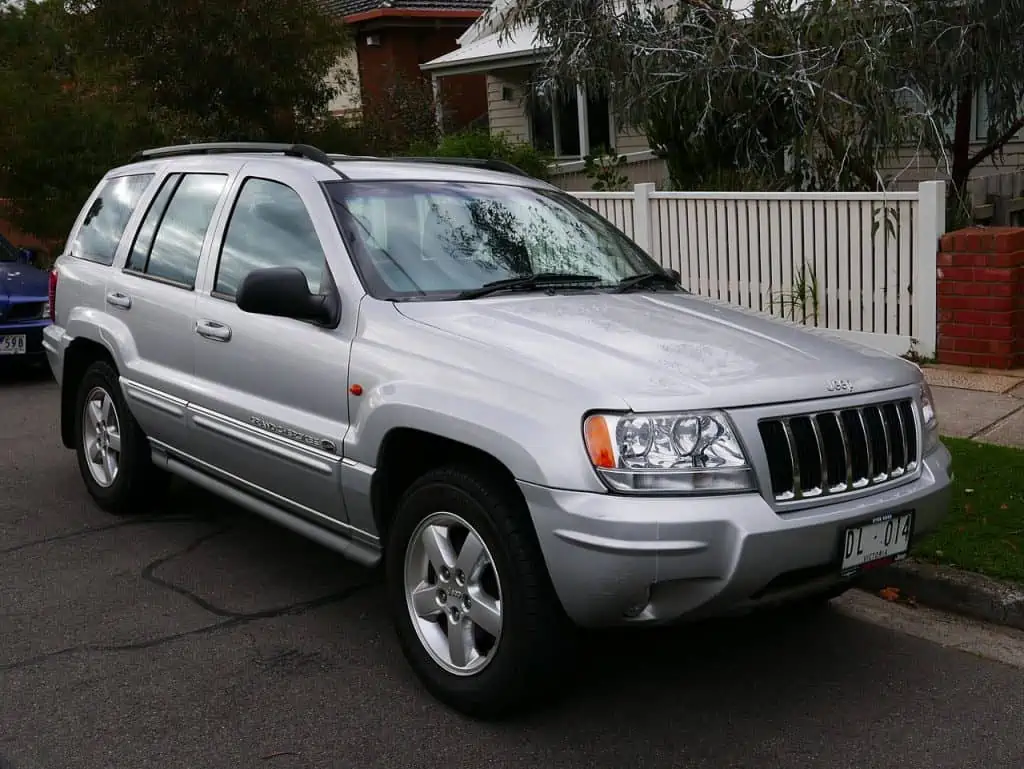
5. Transmission Issues Involving Jeep’s E-Shift Gearbox Being Difficult to Use
Although not a maintenance issue in and of itself, Jeep’s e-Shift has serious design flaws and is quite lethal. The Grand Cherokee served as the model for Fiat-monostable Chrysler’s electronic gear shift system, or “e-Shift.”
In contrast to the tried-and-true PRNDL gearing to which we have grown accustomed, these electronic shifters are new. It is also electronic and not connected to the gearbox.
There are some implementation issues with this electronic shift-by-wire design.
Importantly, due to the e-complex Shift’s design, many owners have unintentionally left their cars in Neutral while believing they were in Park. As a result, there have been numerous rollaway accidents, one of which resulted in the death of Star Trek actor Anton Yelchin.
His Jeep rolled away and killed him. Before FCA completely altered the e-Shift design for the 2017 model years, there was a recall in both 2015 and 2016.
6. Tire Issues Involving the Valve Stems Rusting, Causing TPMS Errors
On the Grand Cherokee and other models in the past, Jeep used aluminum valve stems and caps. This initially appeared to be a good choice, but there was a significant error. They rust after being exposed to moisture frequently and excessively.
Following this incident, Jeep quickly installed rubberized tire caps and stems to stop rust on all new models. However, they flatly refused to address the preexisting problems with rusty valve caps and stems, forcing owners to address them on their own.
As replacing the valve caps and stems also requires replacing the TPMS module, the cost of fixing this is unexpectedly high.
You can expect to pay, on average, $125 for each tire. It’s important to note that some owners were required to pay nearly $200 per tire, so your experience may differ. These caps and stems may also be difficult to locate because they are typically on backorder.
The Conclusion
All things considered, avoiding the Jeep Grand Cherokee model year is like trying to cross a minefield. You might be stuck with thousands of dollars in potential repair costs if you make one poor impulse purchase later.
One could argue that the Grand Cherokee represents a low point for the formerly reliable Jeep nameplate. However, one model year stands out from the rest, and we could suggest it as a dependable purchase.
The 2010 Grand Cherokee represents the third generation’s halfway point. It continues to be one of the Grand Cherokees with the highest reliability rate according to statistics, and it’s sufficiently up-to-date for daily commuting.
It was assumed that the 2010 Jeep Grand Cherokee would have fewer issues because it lacked electronics (such as TIPM). It demonstrates the maxim “less is more.”
Being the final Grand Cherokee of the third generation also meant that any problems from earlier model years had been resolved.
As a result, if you’re looking for an ultra-luxury Jeep, you shouldn’t strictly avoid the Grand Cherokee’s most refined year. Just be aware of the transfer case, which can malfunction otherwise this is an excellent and reliable SUV.
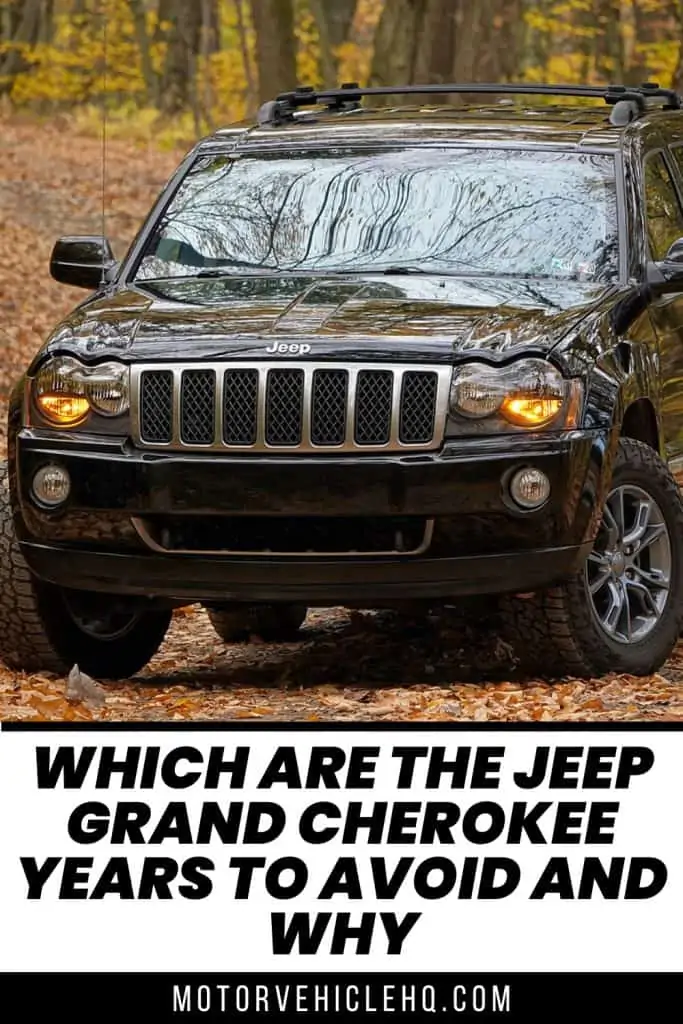
2007 Grand Cherokee Overland by Blasserc / CC BY-SA 4.0

Jim Wicks is the founder of MotorVehicleHQ. With over two decades of experience in the automotive industry and a degree in Automotive Technology, Jim is a certified car expert who has worked in various roles ranging from a mechanic, car dealership manager, to a racing car driver. He has owned more than 20 cars over the past 15 years. Ask him about any vehicle you see on the road and he can tell you the make, model and year. He loves the aesthetics of all things cars, and keeps his vehicles in pristine condition.
In his free time, Jim enjoys getting his hands dirty under the hood of a classic car or taking long drives along the country roads. His favorite car? A 1967 Shelby GT500, a true classic that, according to Jim, “represents the pure essence of American muscle.”
